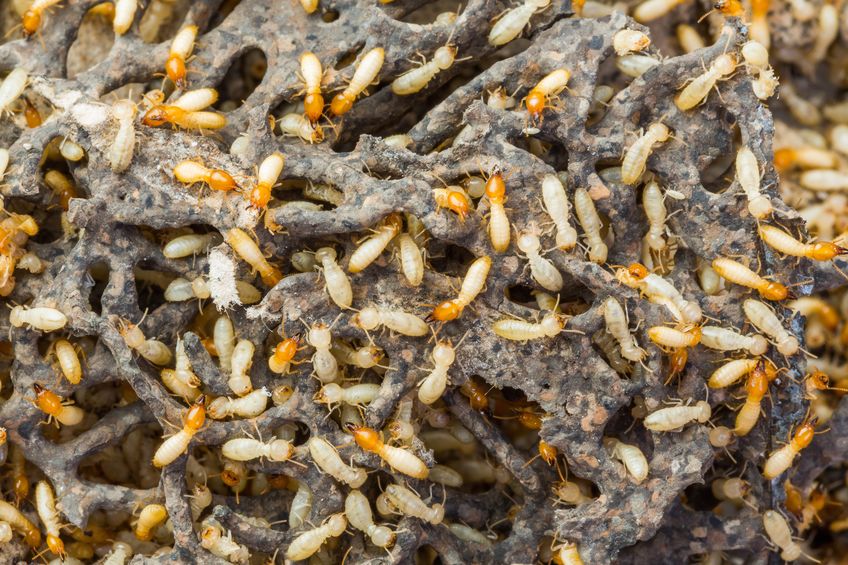Several subterranean termite species inhabit the United States, many of which are classified as “pests of structural wood.” Subterranean termite pests can be found in every state with the exception of Alaska, and the most destructive species, Reticulitermes flavipes, is abundant in Massachusetts. R. flavipes is more commonly known as the “eastern subterranean termite (EST),” and like all subterranean termite species, ESTs live in colonies below the ground.
Mature subterranean termite colonies contain anywhere from tens of thousands to a little more than one million individual termites. The vast majority of these individuals belong to the worker caste, and around two percent belong to the soldier caste. After a colony matures for a period of seven to ten years, winged alates are produced. Winged alates of the EST species take flight from colonies every year during April and May in Massachusetts. The vast majority of alates within a swarm perish before they get a chance to find a mate and start a new colony in moist ground soil.
Social insects like bees, ants and wasps live in colonies that see a single queen serve as the primary reproductive organism. Termites are unique among social insects because their colonies see both a queen and a king serve as the primary reproductives. Interestingly, the queen and king, or the “royal pair,” maintain a monogamous relationship from the moment they mate as alates until their death 15 to 30 years later. The queen and king live unusually long lives, while soldiers and workers live for a period of five and two years, respectively.
Workers make up the majority of a colony because they are responsible for carrying out numerous duties, including foraging, caring for offspring, physically feeding all of their non-worker nest-mates, establishing secondary nesting sites, and nest construction. Most soldiers remain within the parent nest to protect the royal pair and their offspring from predatory attacks and nest disturbances, but a large number of soldiers also accompany workers while they tunnel through soil in search of food sources.
While soldiers defend workers from predators during foraging expeditions, only workers infest and eat wood and other natural and processed materials that contain plant cellulose. The non-wood materials that subterranean termites infest and destroy most frequently include books on shelves, boxes, paper records stored in moist conditions, and even paper currency.
Have termites ever damaged a non-wood item on your property?

